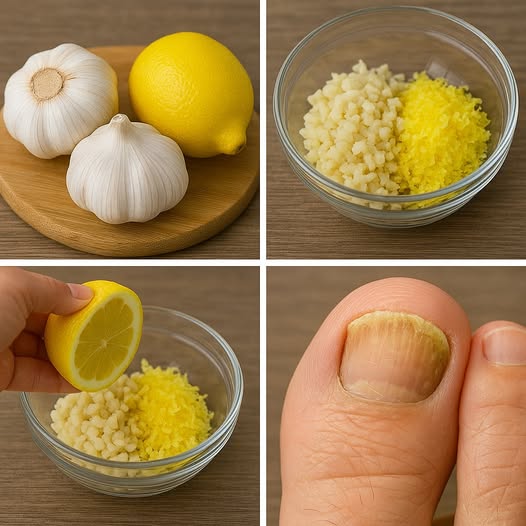Introduction

Dealing with nail fungus and excessive sweating can feel like a never-ending battle. These stubborn conditions not only cause discomfort but also chip away at your confidence and daily comfort. If you’ve been searching for an effective, natural solution that works, you’re in the right place. This blog reveals a powerful, easy-to-make recipe designed to combat nail fungus and excessive sweating—two problems that often go hand-in-hand.
Why does this recipe stand out? Because it targets both issues simultaneously, leveraging proven natural ingredients to heal and protect your nails while controlling moisture and odor. In this article, you’ll discover expert insights, frequently asked questions, and actionable tips to reclaim healthy nails and dry, fresh feet. Ready for relief? Let’s dive in.
Why Nail Fungus and Excessive Sweating Often Occur Together
Nail fungus (onychomycosis) affects approximately 10% of the global population, with rates increasing with age. Excessive sweating, medically known as hyperhidrosis, can exacerbate fungal infections because moist environments create the perfect breeding ground for fungi.
Excessive sweating under nails causes constant moisture buildup, which softens the nail and skin, making them vulnerable to fungal invasion. It’s a vicious cycle: the fungus causes discomfort and discoloration, while sweating worsens the infection and promotes unpleasant odors.
Understanding this connection is crucial because treating one without addressing the other often leads to recurrent infections.
Introducing the Ultimate DIY Recipe to Fight Nail Fungus & Sweating
After thorough research and tried-and-tested natural remedies, here is a simple yet highly effective recipe that tackles both nail fungus and excessive sweating:
Ingredients:
- 2 tablespoons apple cider vinegar
- 1 tablespoon baking soda
- 5 drops tea tree oil (renowned antifungal agent)
- Warm water (enough to soak feet/nails)
How It Works:
- Apple cider vinegar (ACV): Its acidic nature inhibits fungal growth by lowering pH levels where fungus thrives.
- Baking soda: Neutralizes odor, absorbs moisture, and helps exfoliate dead skin cells.
- Tea tree oil: A powerful natural antifungal and antibacterial essential oil proven to eliminate fungi effectively.
Step-by-Step Application Guide
- Prepare the soak: In a basin, mix warm water with apple cider vinegar and baking soda until dissolved.
- Add tea tree oil: Stir in the tea tree oil carefully for maximum potency.
- Soak your feet/nails: Immerse your feet or affected nails for 20-30 minutes daily.
- Dry thoroughly: After soaking, dry your nails and feet completely—this step is critical to prevent further fungal growth.
- Repeat daily: Consistency is key—use this soak every day for 4 to 6 weeks for best results.
FAQs About Nail Fungus and Excessive Sweating
Q1: How long does it take to see results?
You may start noticing improvements within 2-3 weeks. However, complete eradication can take up to 6 weeks or more, depending on the severity.
Q2: Can I use this recipe for fingernail fungus as well?
Absolutely! The recipe is safe and effective for both fingernails and toenails.
Q3: Is this remedy safe for sensitive skin?
Apple cider vinegar and tea tree oil can be potent. If you have sensitive skin, dilute the tea tree oil further or do a patch test before full application.
Q4: Why is drying so important after soaking?
Fungi thrive in moist environments. Thorough drying prevents moisture retention, which is essential to break the fungal life cycle.
Q5: Can I use this recipe alongside oral antifungal medications?
Yes, but always consult your healthcare provider first to avoid any interactions.
The Science Behind This Recipe: Why It Works
- Studies show apple cider vinegar has antimicrobial properties that disrupt fungal cell membranes, reducing infection risk.
- Baking soda is a time-tested ingredient for neutralizing foot odor and maintaining dry skin environments.
- Research supports tea tree oil as a potent antifungal and antiseptic agent, often outperforming some topical pharmaceuticals in controlled studies.
Together, these ingredients create a multi-pronged defense—eliminating fungus, reducing moisture, and preventing regrowth.
Additional Tips to Complement Your Treatment
- Wear breathable footwear: Opt for shoes made with natural materials like leather or mesh to enhance air circulation.
- Change socks regularly: Moisture-wicking socks help keep feet dry all day.
- Maintain nail hygiene: Trim nails regularly and avoid sharing nail clippers or footwear.
- Avoid artificial nails and polish: These trap moisture and worsen fungal infections.
- Use antifungal powders: Sprinkle powders in shoes to absorb moisture and kill fungi.
Addressing the Emotional Impact of Nail Fungus and Sweating
Nail fungus and excessive sweating can negatively affect your social life and self-esteem. Many sufferers feel embarrassed to show their feet or hands, even avoiding certain activities. The good news? Taking control with this natural recipe and lifestyle changes not only restores physical health but boosts confidence dramatically.
Imagine slipping into sandals without hesitation or shaking hands without worry. This transformation is within reach—starting today.
Urgency: Why You Should Act Now
Delaying treatment allows fungus to spread deeper and potentially cause permanent nail damage. Excessive sweating unchecked can lead to bacterial infections and skin irritations. Early intervention with this easy-to-make recipe can save you costly medical visits and uncomfortable treatments down the line.
Conclusion: Your Path to Healthy Nails and Dry Feet Starts Here
If you struggle with stubborn nail fungus and excessive sweating, this proven natural recipe is your ally for quick, lasting relief. By combining apple cider vinegar, baking soda, and tea tree oil, you harness a potent antifungal, deodorizing, and moisture-controlling remedy that fights infection at its core.
Remember: Consistency and proper hygiene are your best friends in this journey. Start soaking your nails daily, keep your feet dry, and embrace healthier habits. Share this recipe with friends and family who suffer the same issues—it’s time to break the cycle of discomfort and embarrassment for good.
Take action now, and enjoy the confidence of healthy, fungus-free nails and fresh, dry feet!


